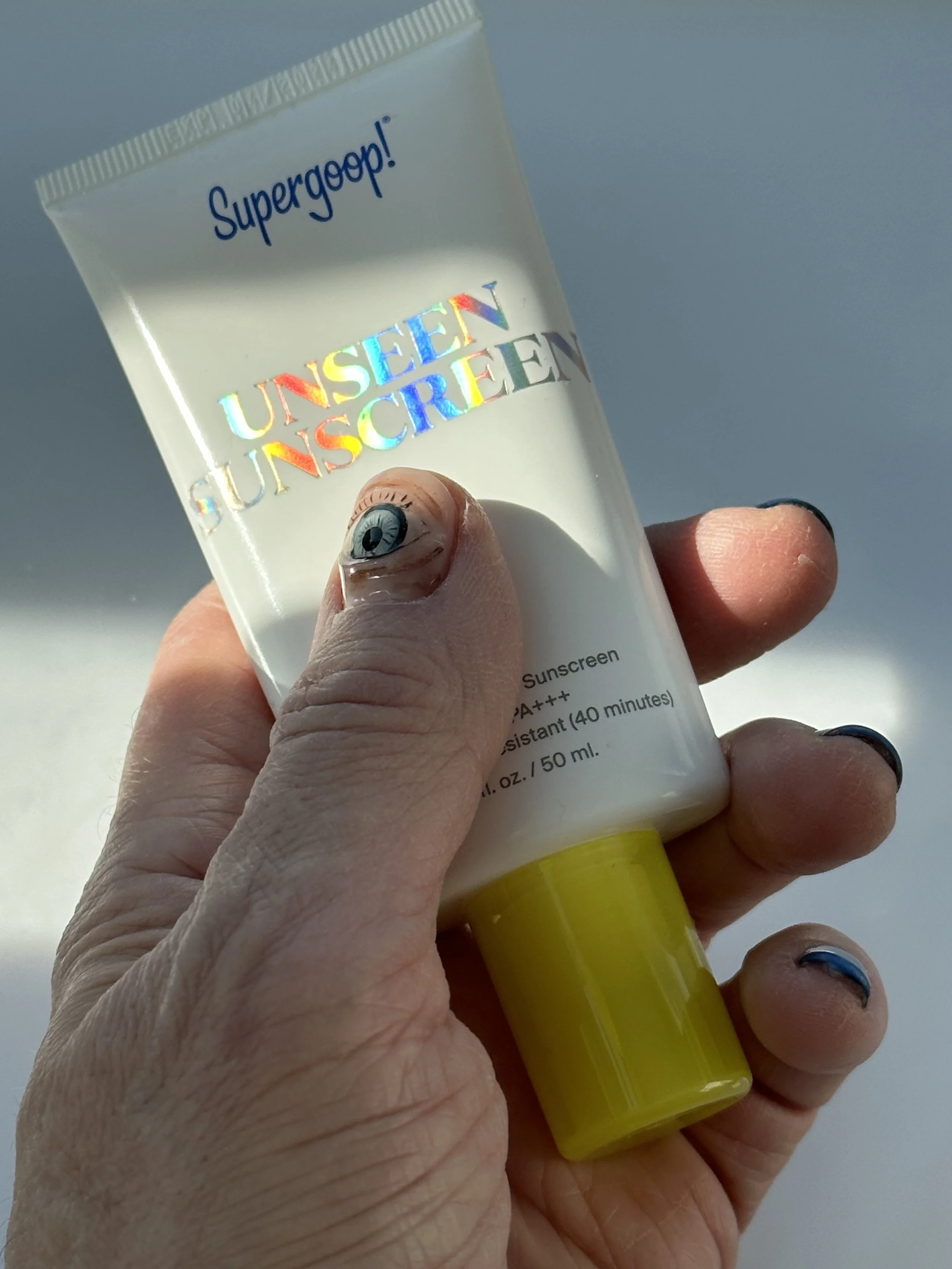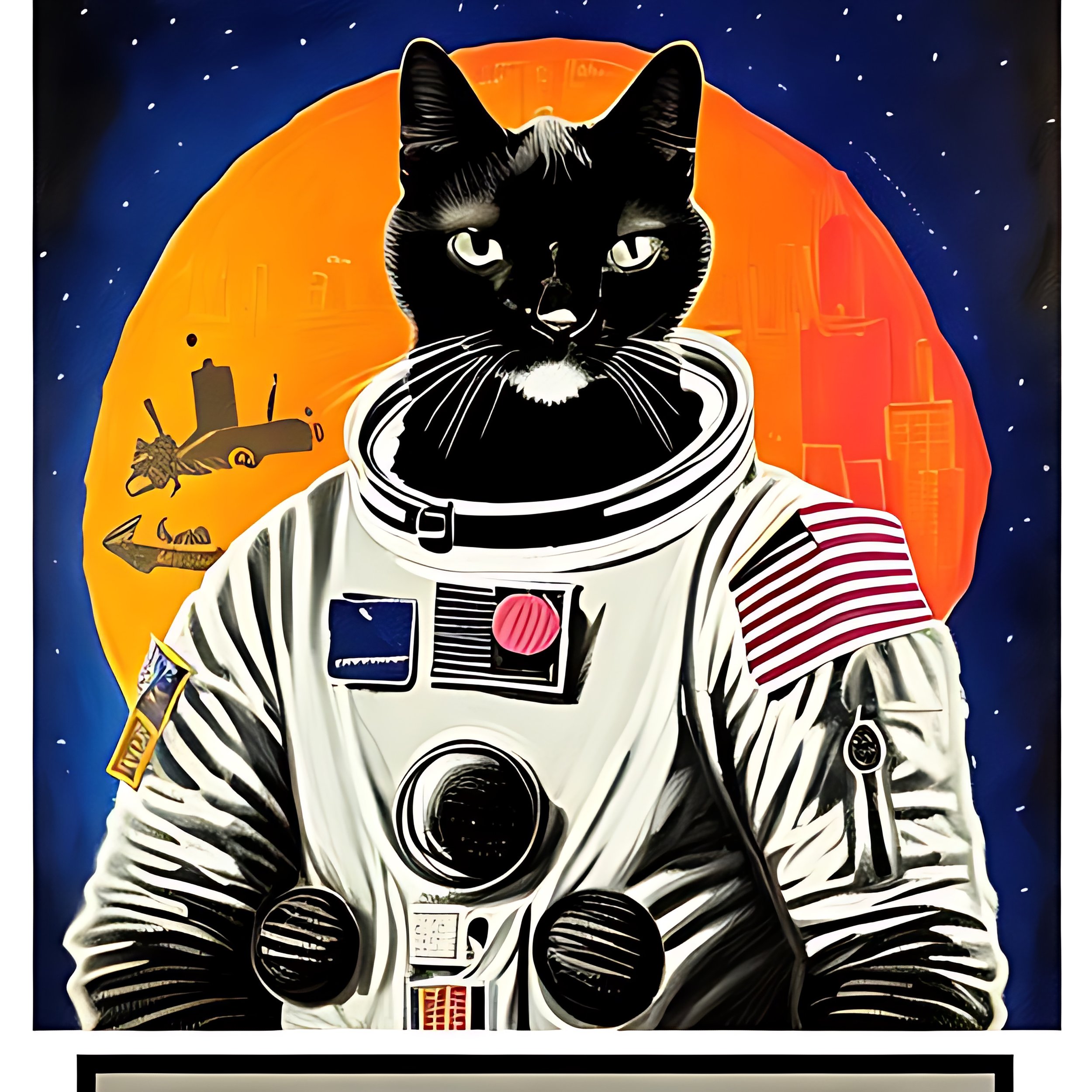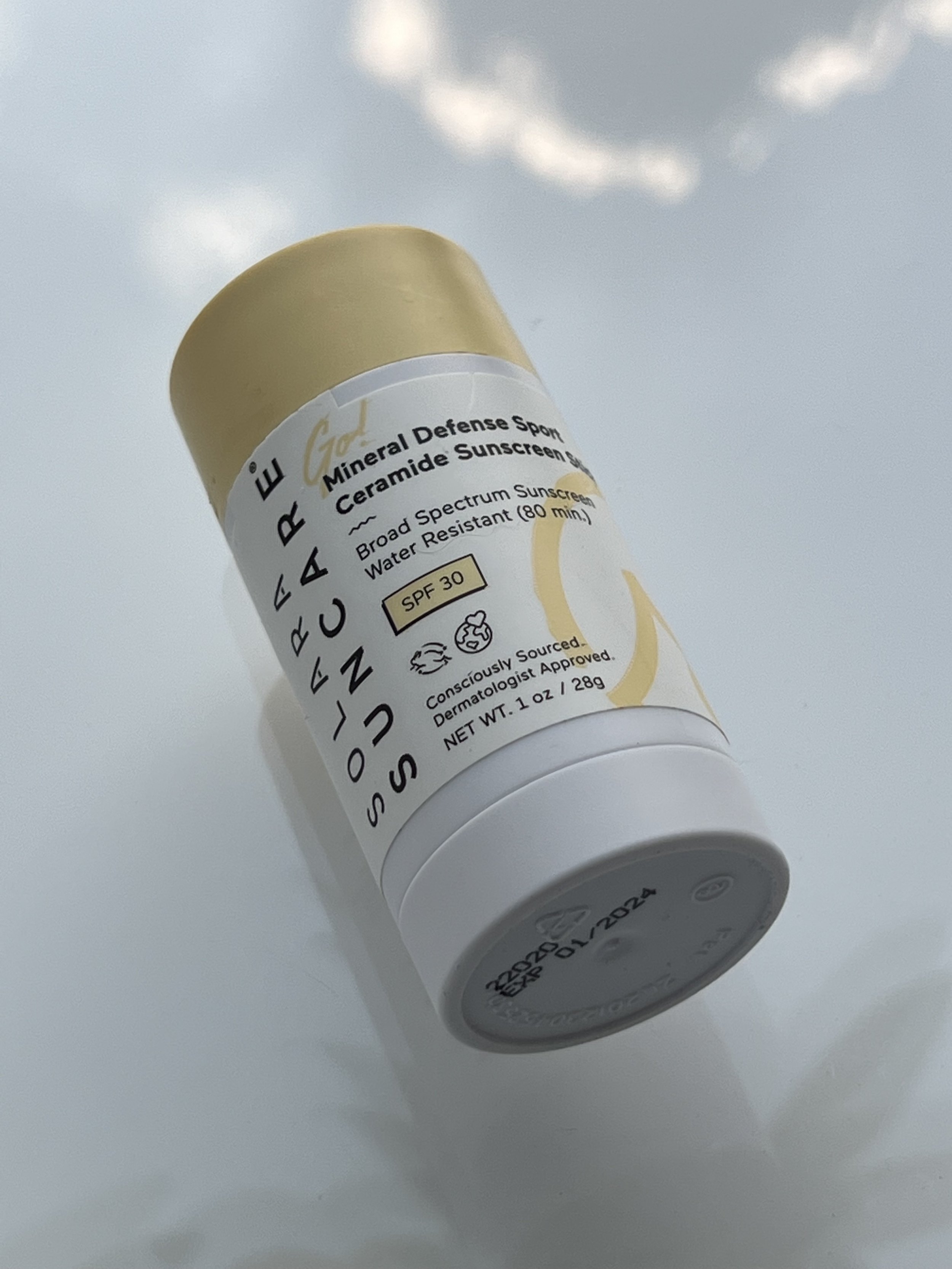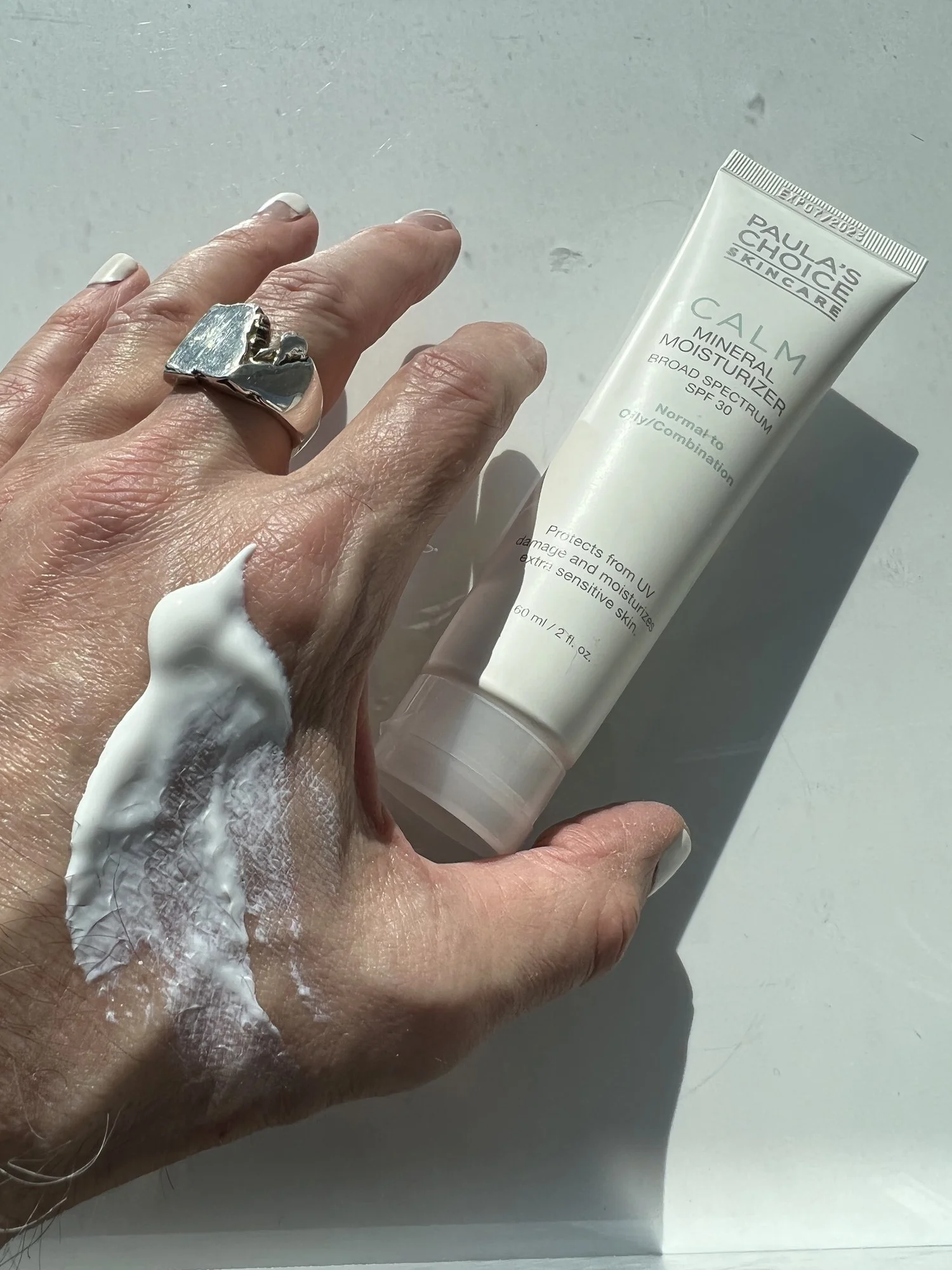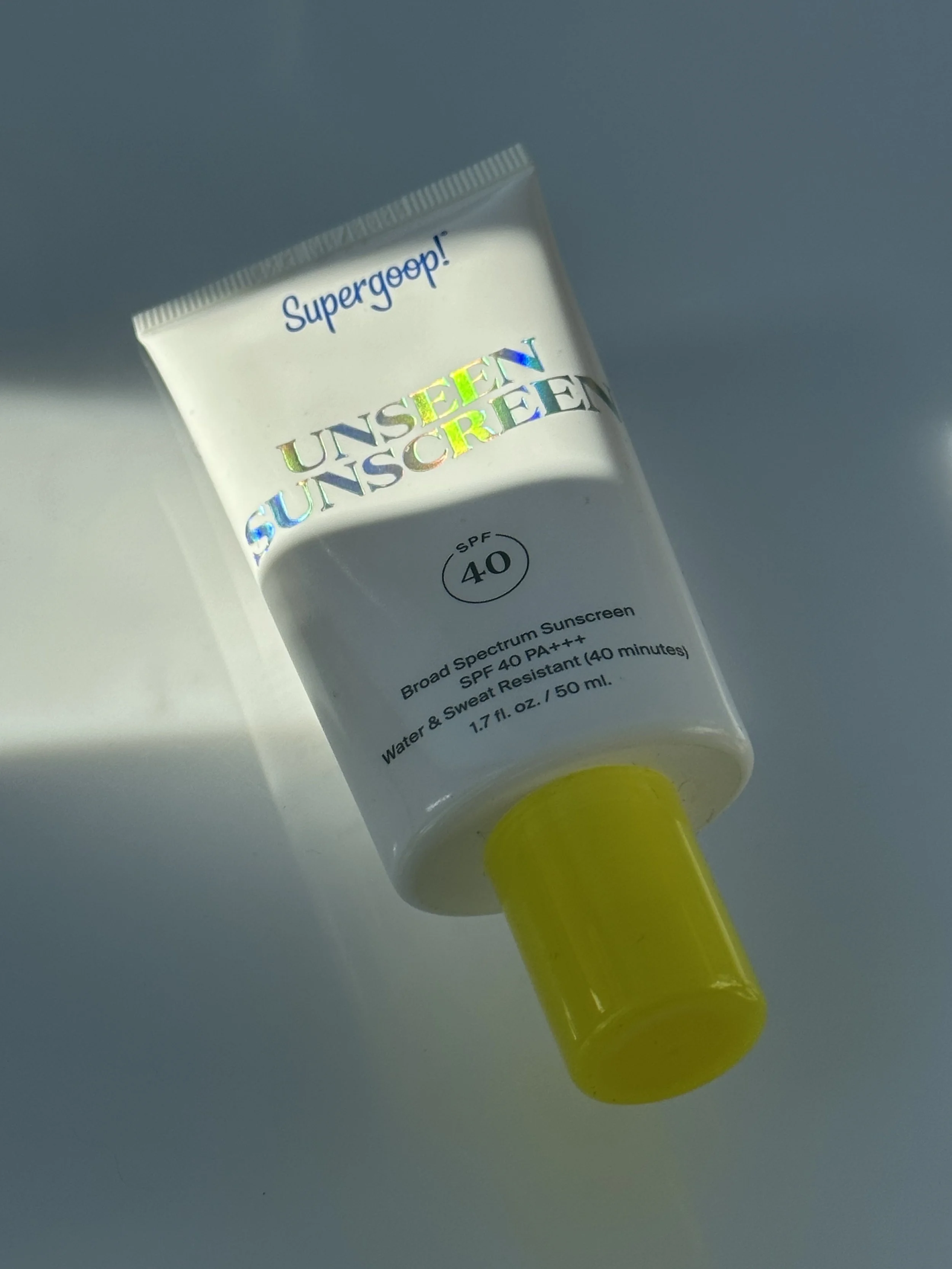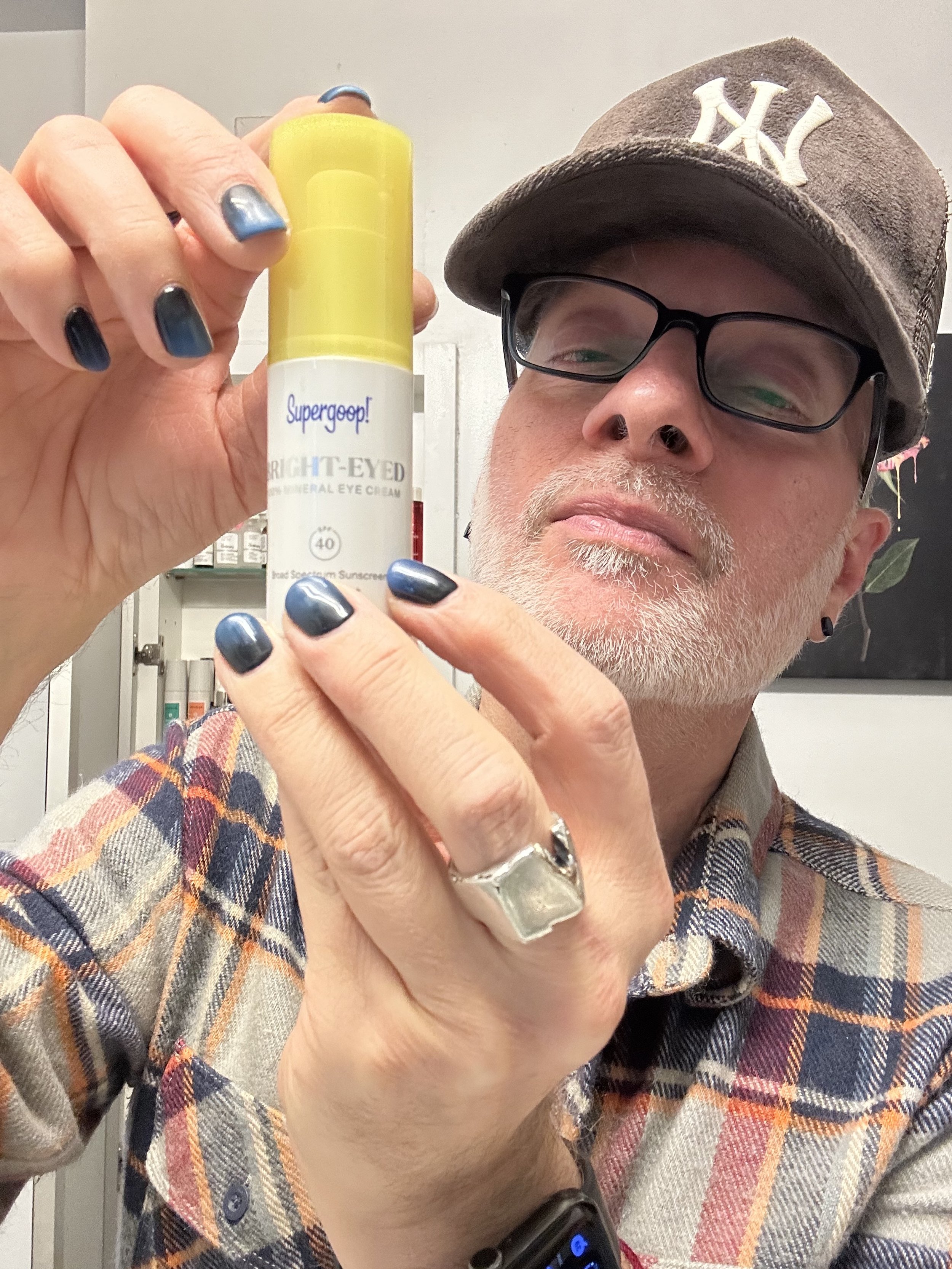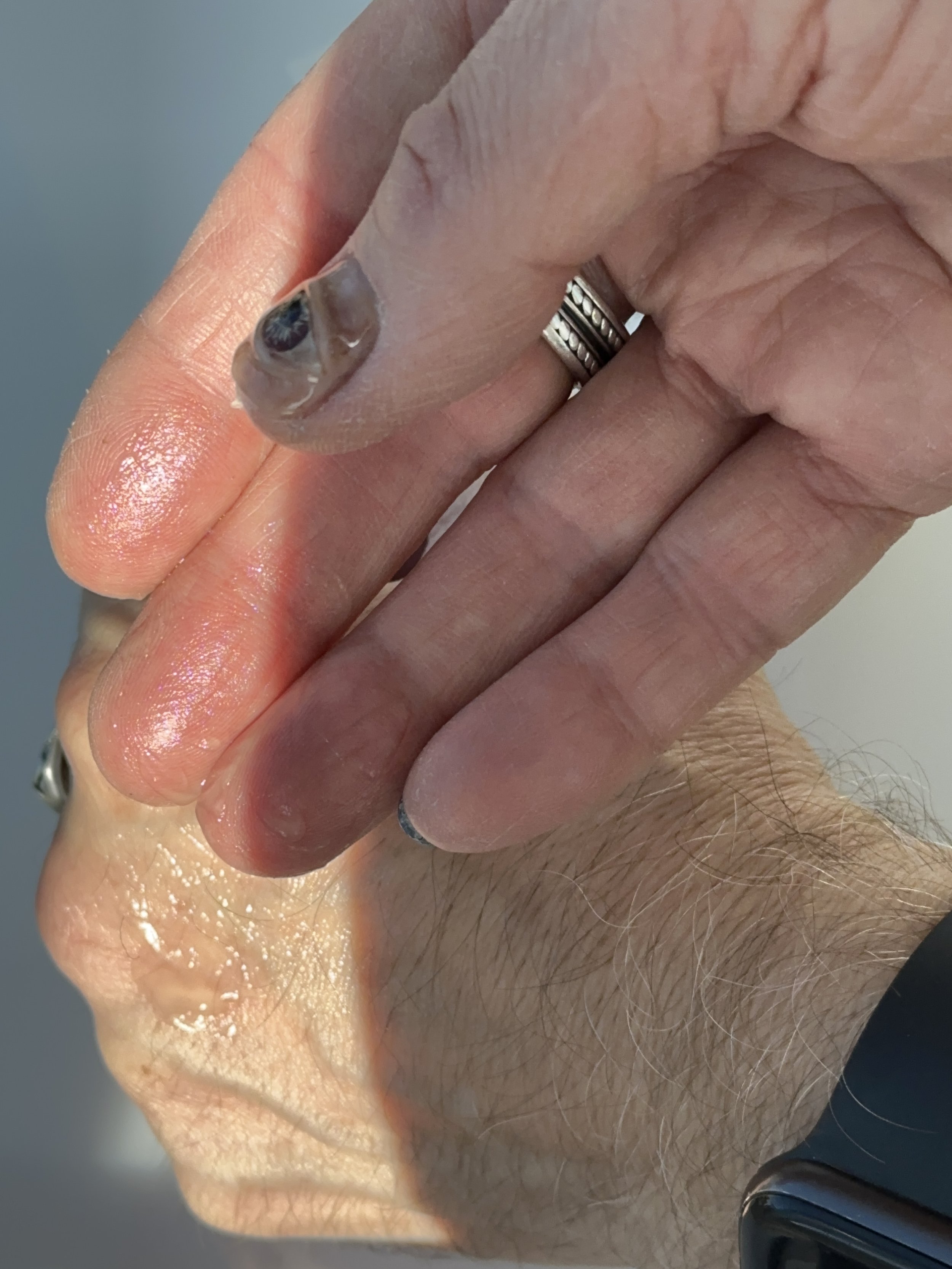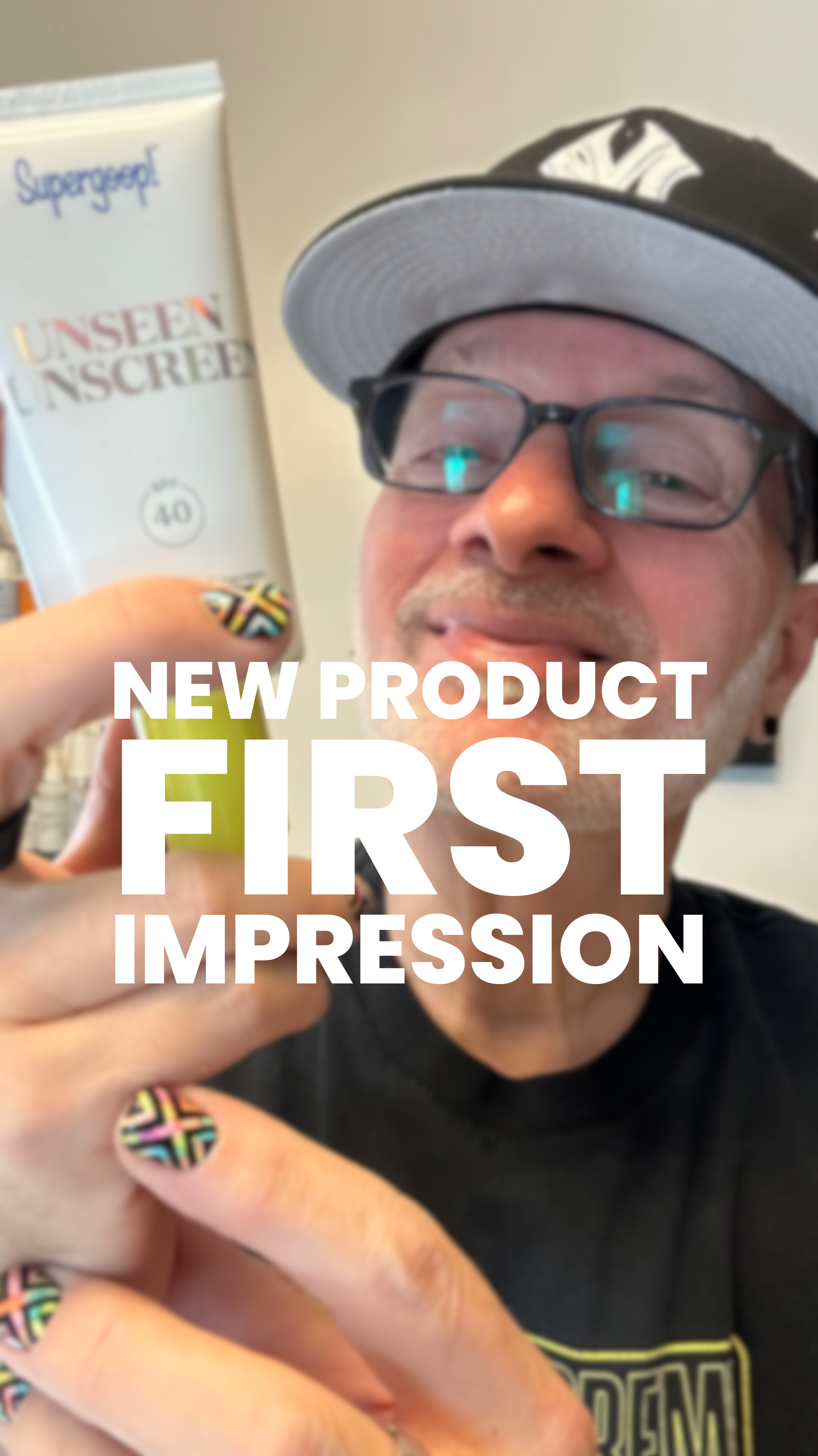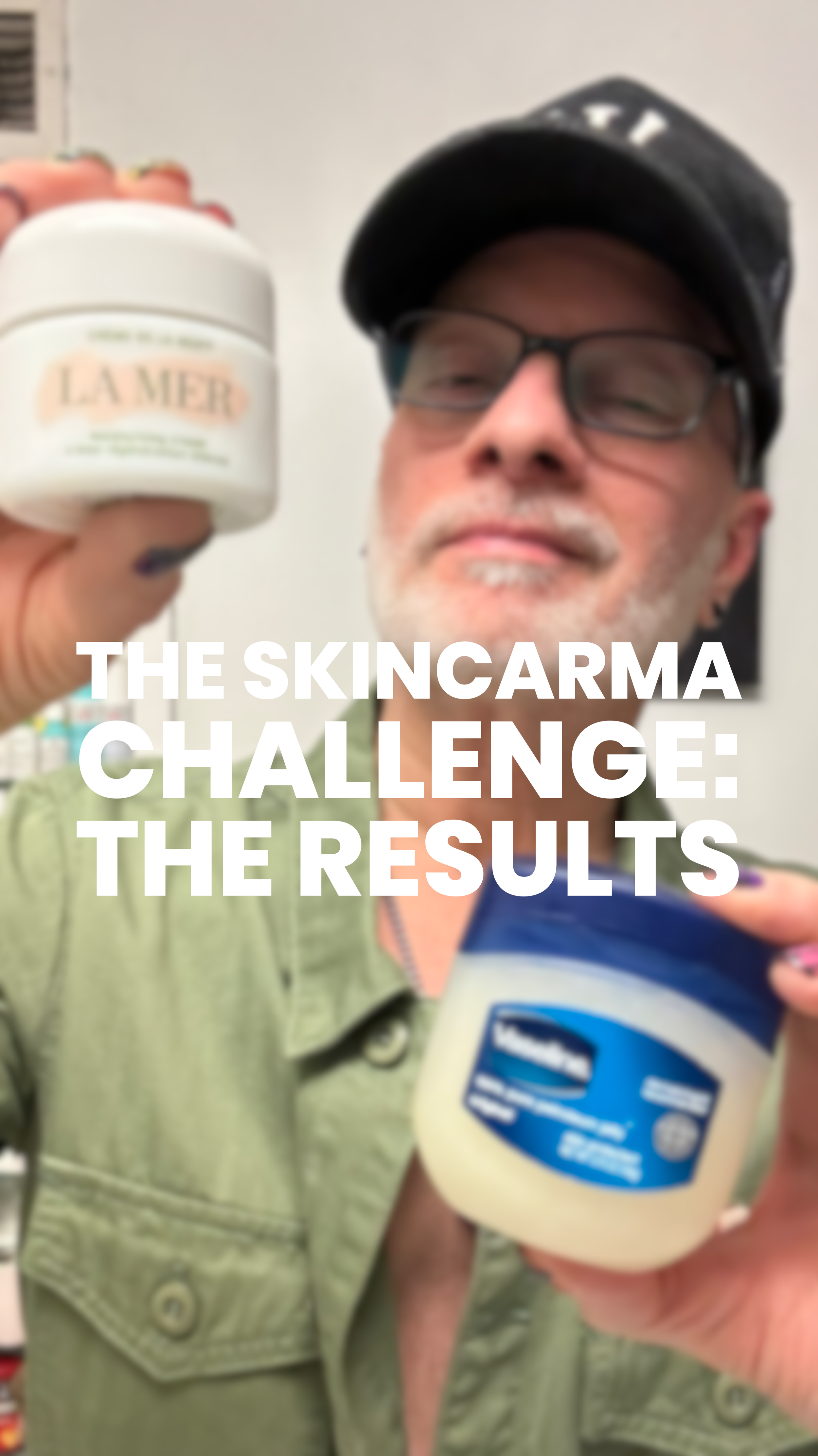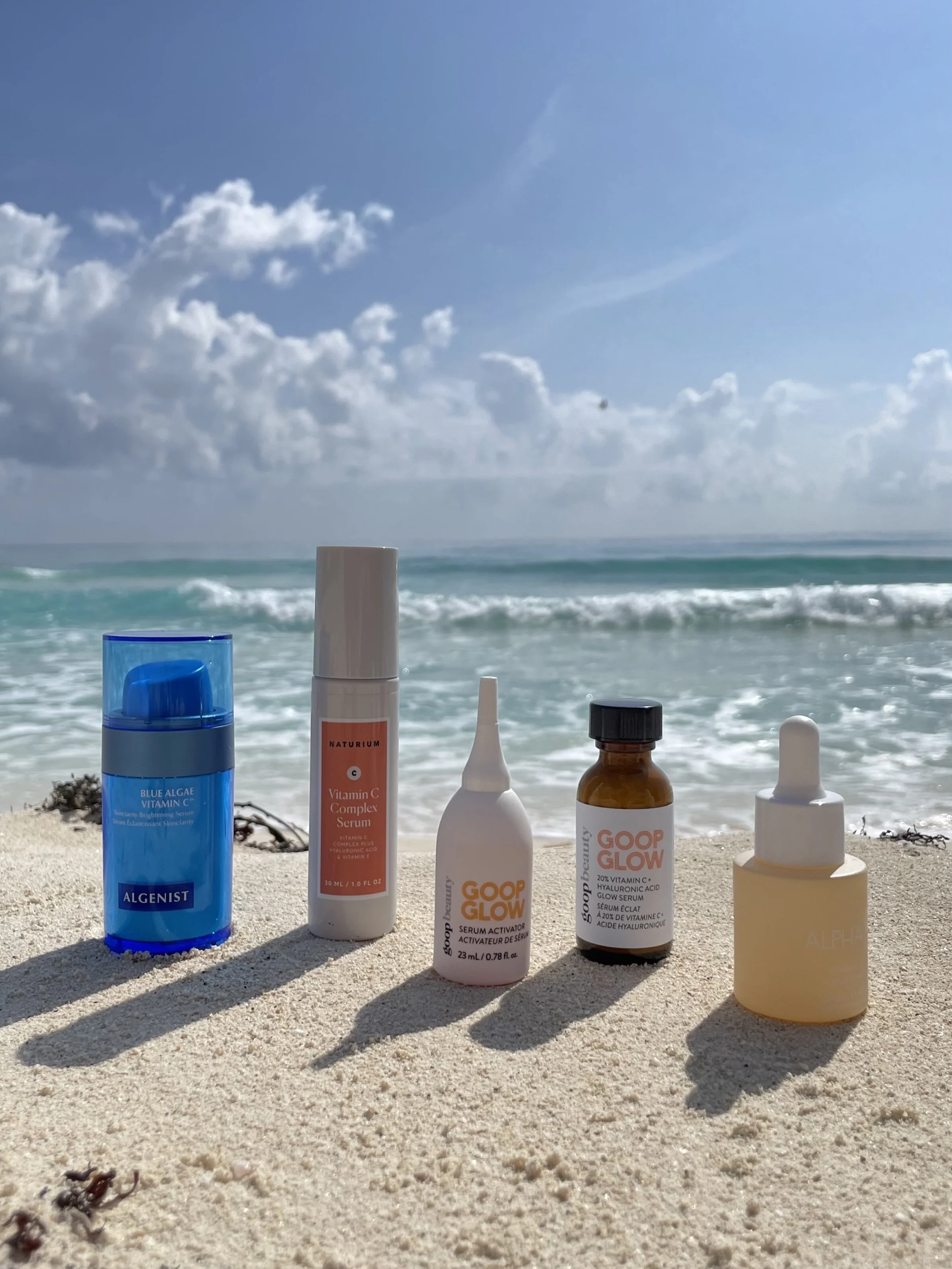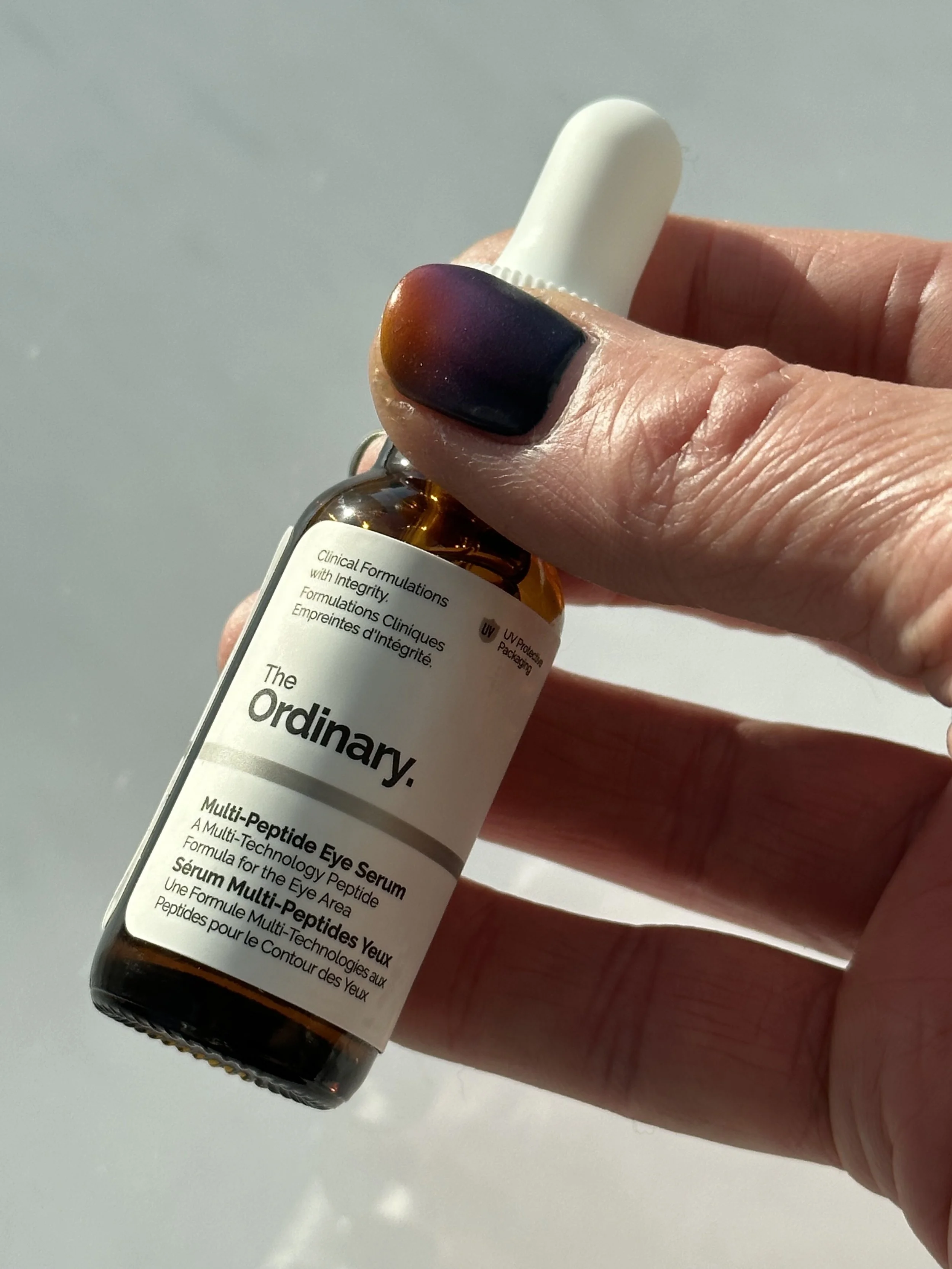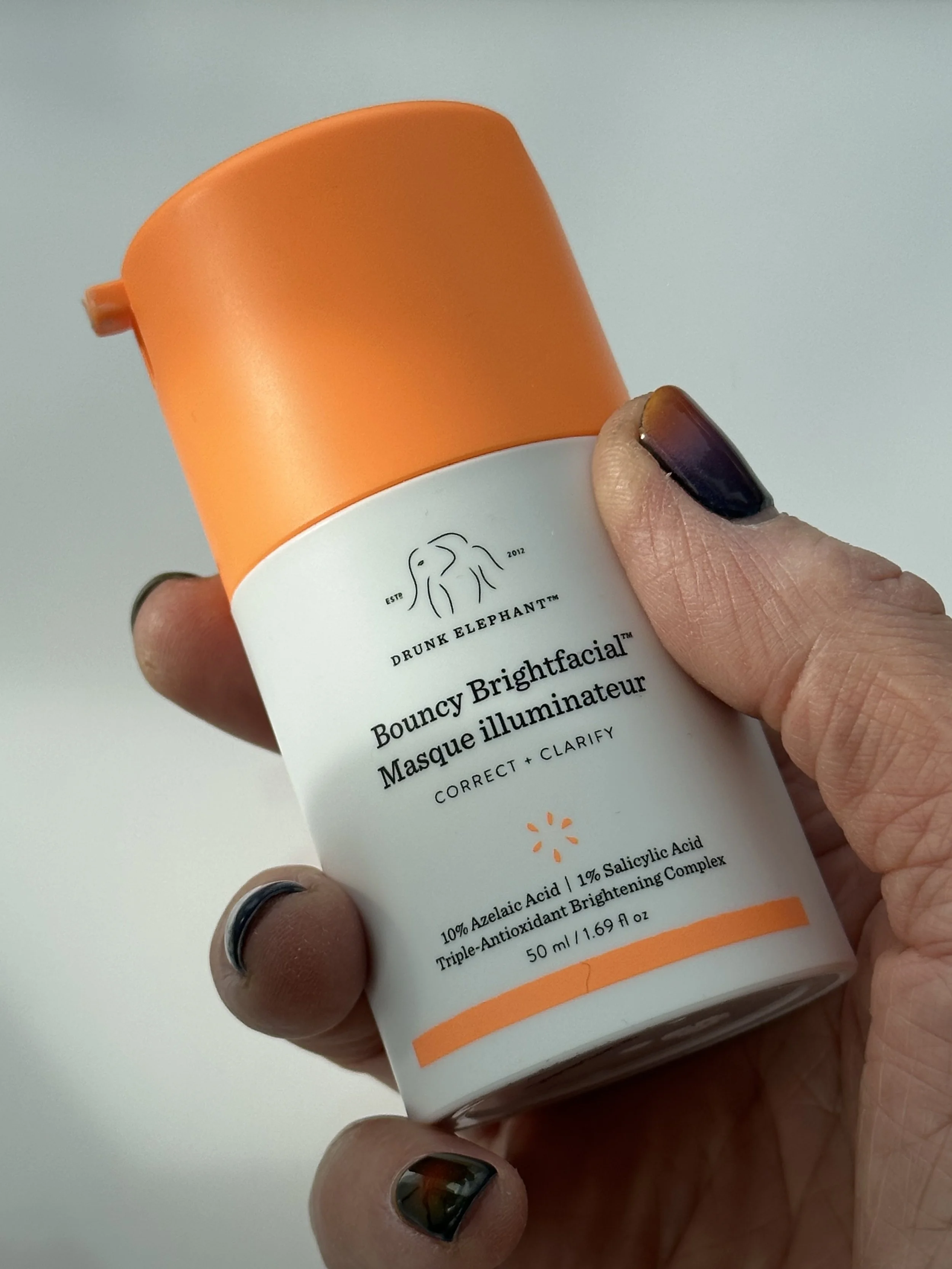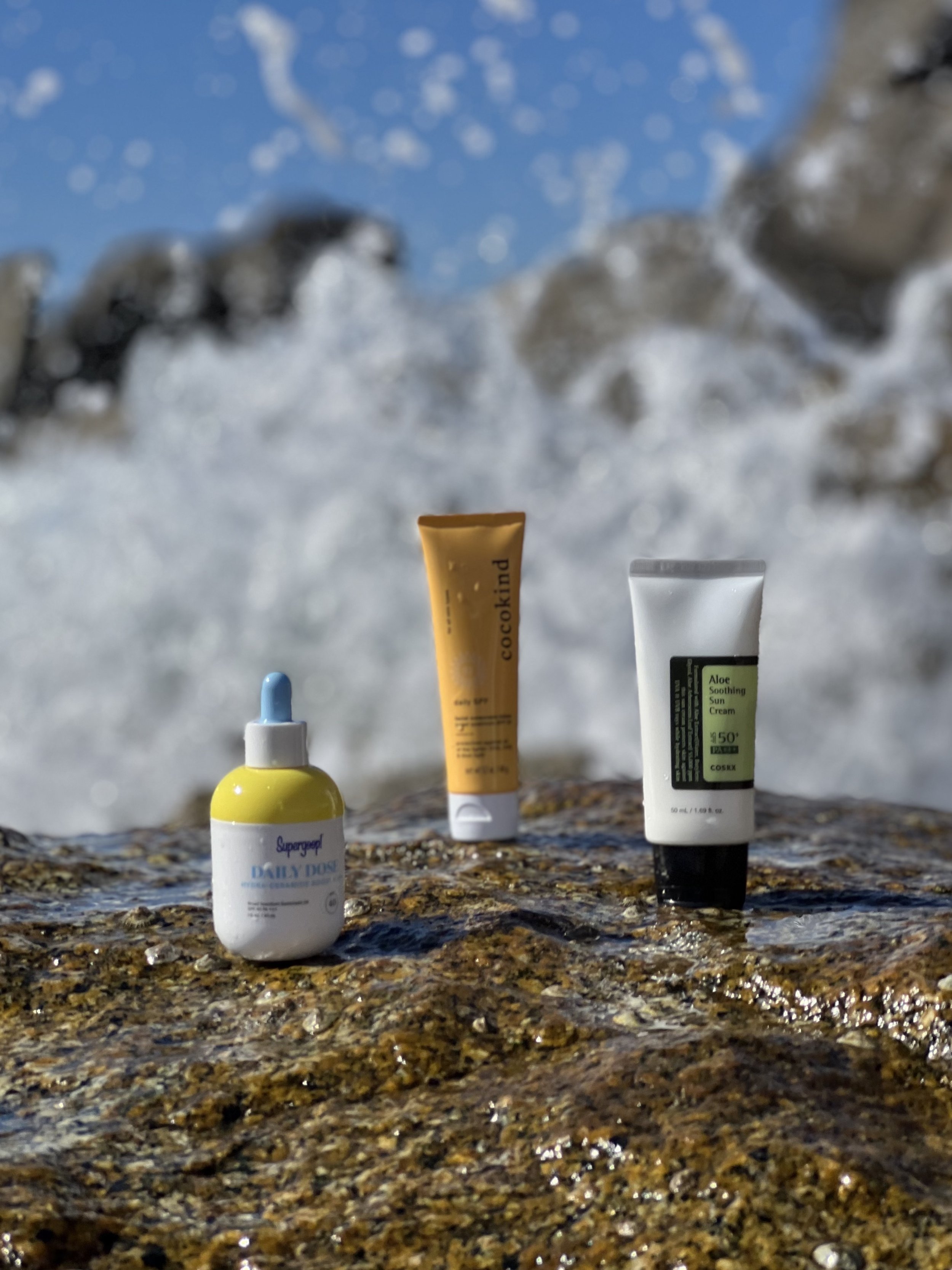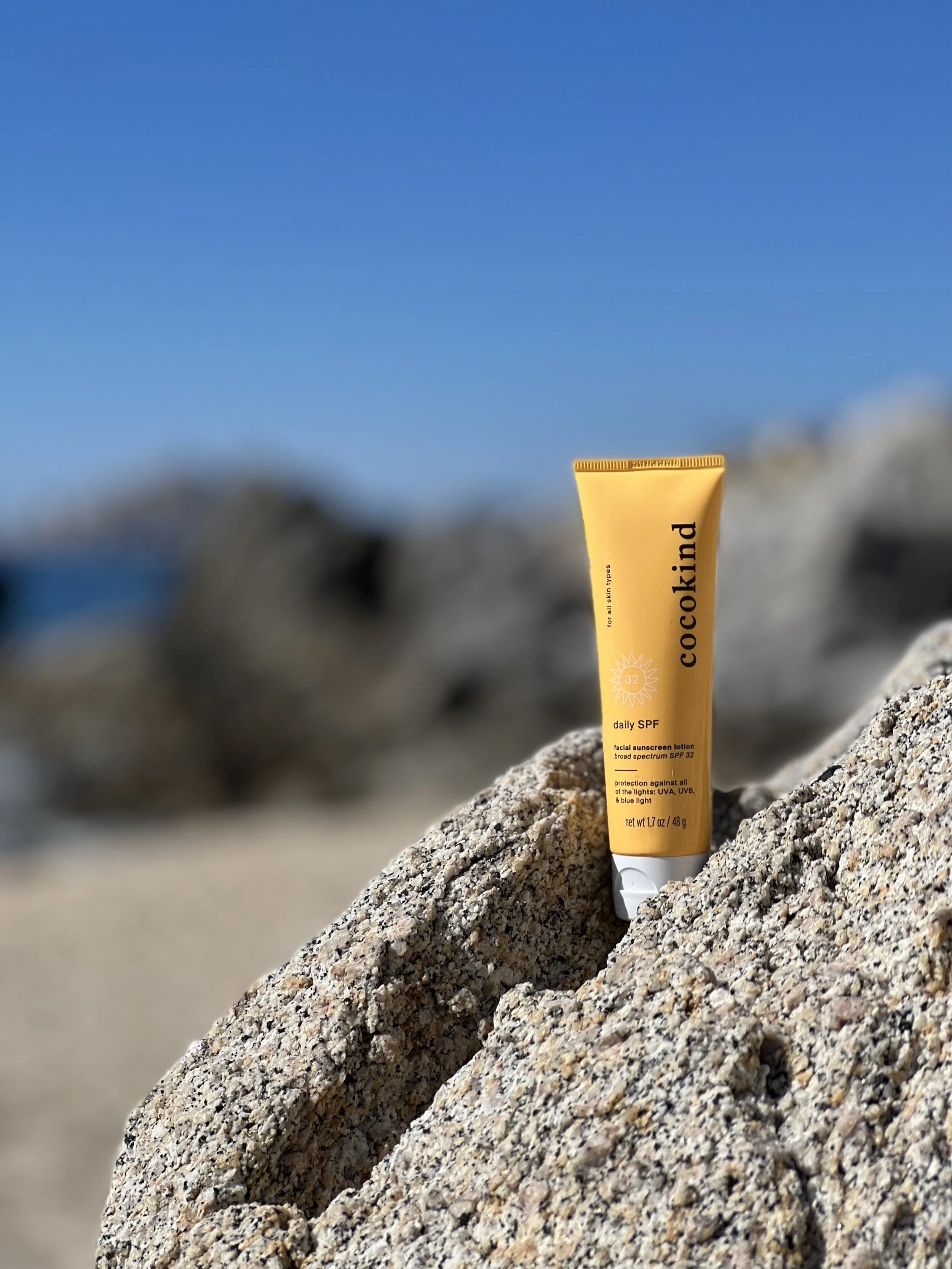PRODUCT REVIEW: SUPERGOOP! UNSEEN SUNSCREEN SPF 40 PA+++ - What’s the Difference Between Mineral and Chemical Sunscreens? Should I Use Chemical or Mineral Sunscreen?
SUPERGOOP! | UNSEEN SUNSCREEN SPF 40 PA+++
Technology has always captured my attention. Growing up, my brother and I had to have the hottest gadgets. It began with the Atari gaming console, officially known as the Atari 2600 Video Computer System, first introduced in November, 1982.
That Christmas, my brother and I made very clear to our parents that we wanted nothing if not an Atari. Our wish was granted. The device hooked up to the TV and changed our lives. I felt like I was in the holodeck on the Starship Enterprise.
Looking back on it now, I can see how it sparked my imagination and influenced my path. What a slippery slope it was! To this day, I have to have the newest tech; that includes, of course, a new iPhone every year. The #fomo is just too intense to ignore.
Over the past few weeks, you’ve likely experienced a wave of AI-generated images on Instagram and TikTok. Using the Lensa app for iOS, I’ve pimped myself out to its artificial intelligence, powered by OpenAI’s Dall-E generative AI. I’ve prompted the technology to reimagine and reinterpret me in the far future, in a watercolor painting, even as a rockstar. The results have been both stunning and surprising. The AI certainly believes I should wear more jewelry than I actually do! Hmm.
My fascination with technology extends to skincare and the way in which skincare products, ingredients and formula technologies interact with the skin. That’s particularly true with how skincare actives penetrate the skin barrier.
It may come as a surprise to know that active ingredients often do not penetrate very well, if at all. That’s by design. After all, one of the main functions of our skin barrier is to keep things out; that includes bacteria, viruses and, yes, substances we apply to our skin.
What does the skin barrier do?
The skin barrier is the outermost layer of your skin that acts as a protective shield [1], preventing environmental irritants, toxins, and pathogens from entering your body. It also helps to keep moisture in and maintain the body's temperature. The skin barrier is made up of three main components: the stratum corneum, the epidermis, and the dermis. The stratum corneum is the outermost layer, made up of dead skin cells and lipids that form a protective barrier. The epidermis is the middle layer, which produces new cells and helps protect against infection, and the dermis is the innermost layer, which contains collagen and elastin that help to keep the skin firm and flexible. Together, these components work together to keep your skin and body healthy.
So, yeah, active ingredients have a really hard time getting past the body’s first line of defense.
Take the water-binding humectant Hyaluronic Acid as an example. Does Hyaluronic Acid penetrate the skin? It’s an open secret that Hyaluronic Acid molecules are far too large to get past your skin’s outer barrier and go where they’re most beneficial – where the hydration is most needed. But skincare marketers would never tell you that. They load up products with HA as if applying a Hyaluronic Acid serum were going to give your skin all the hydration it ever needs.
The sizes and molecular weights of various substances
Now think about water itself. You can’t hydrate your body by taking a shower, right? Imagine if you could! You wouldn’t have to worry about drinking 8 glasses a day or one ounce of water for every pound of body weight – the standard recommendations. You still need to put in the effort by drinking enough water.
But if you sit in the tub for too long, or go swimming for a few hours, your fingers become wrinkled from the water. That’s the water penetrating only the very outer layer of your skin, the stratum corneum. The water molecule, made up of two hydrogen atoms fused to one oxygen atom, doesn’t penetrate very far.
In an article titled, The Hype on Hyaluronic Acid, according to Harvard Medical School,
“Many skincare products containing HA claim to increase hydration within the skin. But is this true? The answer requires a closer look at the type of HA in the product. HA comes in different molecular sizes. Larger HA molecules, despite being the best at binding water and offering hydration, cannot penetrate into the skin. When applied topically (to the skin), these molecules sit on top of the skin, offering hydration only at the very surface. Smaller HA molecules, which bind less water than larger HA molecules, can penetrate deeper into the skin (though only into the epidermis, the topmost layer of skin). For maximum surface hydration, look for a product that contains HA molecules in a variety of sizes.”
Beyond water and Hyaluronic Acid molecules, one equally important substance in particular doesn’t need to penetrate the skin very far to be most effective: sunscreen.
There are two types of UV filters – chemical sunscreens and mineral (aka physical) sunscreens. Popular chemical sun filter ingredients like oxybenzone, tinosorb and homosalate provide defense against photo damage by absorbing UV light as it reaches the skin. Mineral filters like Zinc Oxide and Titanium Dioxide, on the other hand, work by reflecting UV rays away from the skin.
Seeking some back-up for my own description, I asked the you.com AI to answer the question, What's the difference between mineral and chemical sunscreen? Here’s how it responded:
The main difference between mineral and chemical sunscreens is the way they block UV rays [1]. Mineral sunscreens, such as zinc oxide and titanium dioxide [2], work by sitting on the surface of the skin and reflecting the sun’s rays. Chemical sunscreens, on the other hand, penetrate the skin and absorb the UV rays. This means that chemical sunscreens must be applied 15 minutes before sun exposure, whereas mineral sunscreens can be applied immediately. Mineral sunscreens tend to be better suited for those with sensitive or acne-prone skin [3], as they are less likely to cause irritation. In addition, mineral sunscreens are often more effective than chemical sunscreens at blocking UVA and UVB rays, making them the preferred choice for those who spend a lot of time in the sun.
The Best Sunscreens for Face
And, of course, all of this begs the question, Which is better, chemical or mineral sunscreen? We don’t need the AI to answer that one. It’s personal, a strictly human thing. Yes, there’s a lot of buzz around whether chemical sunscreens are bad for you, how much of it is absorbed by the skin, and whether enough of it enters your bloodstream to cause harm. I’ll let the scientists do their thing.
Until then, there’s nothing worse than not wearing sunscreen. The science has proven that unprotected exposure to the sun’s UV rays causes skin cancer and photo damage – including collagen degradation, surface wrinkles and hyperpigmentation.
For me, I prefer to use a mineral sunscreen from day to day. Others don’t like the look and feel of a mineral sunscreen and prefer wearing a chemical sunscreen – if they even wear sunscreen at all.
PRODUCT REVIEW: SOLARA SUNCARE GO! MINERAL DEFENSE SPORT CERAMIDE SUNSCREEN STICK SPF 30
I’m currently working on a new sunscreen brand that has yet to launch. Last week, a dermatologist on the team shared the surprising results of a study he’d reviewed on people’s suncare behaviors and their facial sunscreen product preferences. When participants were asked why they don’t wear sunscreen every day, the number one reason given was that they don’t like how it feels on their skin.
As I’ve said numerous times, what’s most important is that you find a facial sunscreen product you love so much that you wouldn’t think of skipping it – even on a cloudy, seemingly sunless day. Your concern shouldn’t be whether or not it’s mineral or chemical. If you like it, use it!
The number one reason people don’t wear sunscreen is they don’t like how it feels on their skin.
So yes, my favorite daily UV protection usually comes in the form of a mineral facial sunscreen. If given the choice, that’s what I’d always reach for. Among my faves are the Paula’s Choice CALM Redness Relief SPF 30 Mineral Moisturizer and the Drunk Elephant Umbra Sheer™ Physical Daily Defense SPF 30.
PRODUCT REVIEW: PAULA’S CHOICE REDNESS RELIEF SPF 30 MINERAL MOISTURIZER
But some of my favorite sunscreens for face are made with chemical UV filters and some are hybrids – that is, they’re formulated with both classes of UV filters. Two of my favorite chemical sunscreens are from Supergoop! They include the brand’s Daily Dose Vitamin C + SPF 40 Sunscreen Serum PA+++ and Supergoop’s new Daily Dose Bioretinol + Mineral SPF 40 with Bakuchiol.
Which brings me to Supergoop’s most popular facial sunscreen of all, the Unseen Sunscreen SPF 40 PA+++. I’m a big fan of the brand and their mission to help people overcome their resistance to wearing sunscreen – and, importantly, to make a daily habit of it. Supergoop has understood that preferences vary and that people’s biggest objection is that they just don’t like how sunscreen feels on their skin.
With its unusually light, almost otherworldly texture, Unseen Sunscreen feels great on the skin from the first application. In fact, it feels like nothing at all. Let’s take a closer look at my fave sunscreen discovery of the new year…
Supergoop! | Unseen Sunscreen SPF 40 PA+++
The Supergoop! Unseen Sunscreen SPF 40 PA+++ is one of the most pleasurable facial sunscreens I’ve come across in quite some time. If you’re familiar with the brand’s Daily Dose Vitamin C + SPF 40 Sunscreen Serum and what a great pleasure that sunscreen serum is, then you know how close to nirvana I come when I use them!
Sunscreens are my favorite products and I’ve probably adventure tested hundreds over the course of my 20-year career – as both a skincare copywriter and a blogger.
The most unusual facial sunscreen I’ve ever come across in all those years is the Skin Aqua Super Moisture Milk, which I first reviewed around 2018. You can catch my Skin Aqua Super Moisture Milk review on the blog here. What I consider the best J-Beauty sunscreen, it’s so unusual that I joked at the time I suspect it may be made from alien technology. There’s simply nothing else like it. It blends in well and feels so light on your skin that you barely know you’ve applied it.
PRODUCT REVIEW: SKIN AQUA SUPER MOISTURE MILK SPF 50 – BEST JAPANESE SUNSCREEN
To me Supergoop’s Unseen Sunscreen is like that. It has an exceptionally unique, lightweight gel-like texture that glides on your skin like a gel-cream would. And like the brand’s popular Daily Dose Vitamin C + SPF 40 Sunscreen Serum, you can barely tell that it’s there apart from a slight glow.
It’s crazy to me that a sunscreen this good hadn’t come my way until now – more than two years since its introduction. Where have I been all this time? Honestly, I guess I’d kind of bought into the brand’s Daily Dose franchise and didn’t see the need to explore anything else. But I’m glad I did!
So, yes, it makes for a supremely wearable facial sunscreen. I’m not a makeup wearer, but I’ve heard from friends and followers that Unseen Sunscreen is an ideal makeup primer and that makeup glides on over it quite well.
What is it that gives the Supergoop! Unseen Sunscreen its unusual texture? A deep dive into the formula INCI and you can see that the first few ingredients after the sun filters are all about texture. The first is Isododecane, a common ingredient found in many lipsticks.
According to the experts on the Paula’s Choice research team, Isododecane is a “synthetic hydrocarbon ingredient used as a solvent. Isododecane enhances the spreadability of products and has a weightless feel on skin. All hydrocarbons used in cosmetics help prevent the evaporation of water from skin. Among its many uses in beauty products, it’s not uncommon to see isododecane in long-wear lipsticks and foundations, where it helps minimize color transfer and lends itself to a lightweight, matte finish.”
Next in the INCI is Dimethicone, a commonly used emollient and texture-enhancing silicone. Dimethicone gives products that luxurious, silky feel – and the Supergoop! Unseen Sunscreen SPF 40 PA+++ certainly has that in spades.
PRODUCT REVIEW: SUPERGOOP! BRIGHT-EYED 100% MINERAL EYE CREAM SPF 40
What Does PA Mean in Sunscreen and Is PA Better than SPF?
The PA rating on a facial sunscreen label is not all that common in US-made and marketed facial sunscreens. It’s a requirement of the Japanese regulatory agency that oversees OTC drugs like the FDA does in the US. But the FDA doesn’t require it here; rather, it’s optional.
Essentially, the PA rating is an evaluation of a sunscreen product’s efficacy at defending against UVA rays, specifically. UVA rays are the more insidious of the range of UV radiation that includes UVA, UVB and UVC. They penetrate deep into the skin and are responsible for melanin activation, DNA damage, collagen degradation and skin cancer.
In the United States, the FDA simplifies a sunscreen’s defensive rating, restricting it to an SPF number, which measures the product’s ability to defend against burning UVB rays. When a product is described as containing “broad-spectrum protection” it means it’s defending against both UVA and UVB rays, without defining the level of UVA defense.
There’s an excellent piece from the Paula’s Choice research team titled, What Does the PA+ Sunscreen Symbol Mean? on the brand’s website here.
The SPF rating on a sunscreen bottle stands for Sun Protection Factor, a measurement of how long you can stay outside during the day and be protected from the sun’s burn-causing UVB rays (assuming you’re applying sunscreen the right way). UVA rays are present, too; this is where the PA+ rating system comes into play.
Some sunscreens include PA+ rating on their products. The letters “PA” followed by plus signs (PA+, PA++, PA+++, and PA++++) on a label are a rating system developed in Japan to represent how much UVA protection the product offers.
The sun’s UVA rays do not cause sunburn; rather, they cause skin to turn brown. UVA rays are known as the sun’s silent killers because you don’t feel them affecting skin. Despite the lack of pain associated with UVA rays, they penetrate deeply into skin, causing a somewhat different type of damage than UVB rays.
This is what each PA rating means:
PA+ = Some UVA protection.
PA++ = Moderate UVA protection.
PA+++ = High UVA protection.
PA++++ = Extremely High UVA protection.
Aside from its four chemical sun filters (Avobenzone, Homosalate, Octisalate and Octocrylene) and multiple texture enhancers, what else is notable about the Supergoop! Unseen Sunscreen SPF 40 PA+++?
Well, the formula does contain a few skin soothers and hydrators. Among these are red algae, Shea Butter, and what Supergoop! describes as a “complex derived from Meadowfoam Seed. While all of these are relatively effective actives, they’re not at high enough levels to address dehydration and subsequent trans-epidermal water loss. Thus, I apply Unseen Sunscreen over a serum with Hyaluronic Acid and a well-formulated face cream appropriate for the climate I’m in at the time.
Currently, it’s the middle of winter here in Brooklyn so I’ve been applying this over a heavier moisturizer like the Skinfix Barrier+ Triple Lipid-Peptide Face Cream or Drunk Elephant’s
Protini™ Polypeptide Firming Moisturizer – my two winter skin saviors.
If you have oily or acne prone skin, you may be fine without an additional moisturizer.
SKINCARMA ON TIKTOK
Catch my first impression of it!
What I like about it: The Supergoop! Unseen Sunscreen SPF 40 PA+++ is such a unique facial sunscreen with a texture I consider out of this world. It really solves the concerns people have over how a sunscreen feels on their skin. Because it’s so lightweight, it’s ideal for every day of the year, over a face cream or on bare skin.
What I don’t like about it: I wish it had more beneficial actives in the form of antioxidants like Niacinamide or Green Tea Extract. I doubt these would change the texture and they’d add to the product’s defense against photo damage and photoaging.
Who it’s for: All skin types, even very oily or acne-prone skins.
SHOP THE BLOG: Purchase the Supergoop! Unseen Sunscreen SPF 40 PA+++ for $48 here.
The Ingredient List of the Supergoop! Unseen Sunscreen SPF 40 PA+++:
 sunsc, Homosalate (8%) sunsc, Octisalate (5%) sunsc 0 0, Octocrylene (4%) sunsc
sunsc, Homosalate (8%) sunsc, Octisalate (5%) sunsc 0 0, Octocrylene (4%) sunsc emo|vc, Jojoba Esters so|emo|h, Mannitol
emo|vc, Jojoba Esters so|emo|h, Mannitol  h, Boswellia Serrata Resin Extract, Lecithin
h, Boswellia Serrata Resin Extract, Lecithin  emo|emu, Microcrystalline Cellulose vc, Diatomaceous Earth abrasive/scrub, Zinc Sulfate amic, Silica vc, Tocopherol
emo|emu, Microcrystalline Cellulose vc, Diatomaceous Earth abrasive/scrub, Zinc Sulfate amic, Silica vc, Tocopherol  aox 0-3 0-3
aox 0-3 0-3MY TOP VITAMIN C PICKS FW21: NEW VITAMIN C SERUMS I’M CRUSHING ON FROM ALGENIST, NATURIUM AND MORE
WATCH MY VIDEO REVIEW
THE BEST NIACINAMIDE SERUMS FOR CLOGGED PORES AND A BRIGHTER COMPLEXION
ON MY YOUTUBE CHANNEL HERE
WATCH MY VIDEO REVIEW OF
SKINCARE HACKS: GLYCOLIC ACID IS THE NATURAL DEODORANT THAT WORKS!
ON MY YOUTUBE CHANNEL HERE
WATCH MY VIDEO REVIEW OF
MY FAVORITE HUMECTANT SERUMS FROM PAULA'S CHOICE, THE INKEY LIST, GHOST DEMOCRACY AND MORE
ON MY YOUTUBE CHANNEL HERE
WATCH MY VIDEO REVIEW
COOL CLEAN FACIAL SUNSCREENS TO KEEP US SAFE AND SMILING IN THE SUN!
ON MY YOUTUBE CHANNEL HERE
WATCH MY VIDEO REVIEW
THE OPULUS BEAUTY LABS RETINOL SYSTEM – THE COOLEST RETINOL INNOVATION I’VE EVER SEEN
ON MY YOUTUBE CHANNEL HERE
WATCH MY VIDEO REVIEW
MY 2021 VITAMIN C PICKS + THE BEST VITAMIN C SERUMS TO BRIGHTEN UP THE COMPLEXION!
ON MY YOUTUBE CHANNEL HERE
WATCH MY VIDEO REVIEW OF
MY WINTER SKIN SAVIOR: SKINFIX BARRIER+ LIPID REPLENISHING SKINCARE
ON MY YOUTUBE CHANNEL HERE
WATCH MY VIDEO REVIEW
A COMPLETE K-BEAUTY ROUTINE WITH THE BEST FACIAL SKINCARE FROM PURITO, COSRX, MISSHA & MORE!
ON MY YOUTUBE CHANNEL HERE
WATCH MY VIDEO REVIEW
THE YEAR’S BEST VITAMIN C SERUMS WITH PAULA'S CHOICE, SUNDAY RILEY, THE INKEY LIST AND MORE!
ON MY YOUTUBE CHANNEL HERE
WATCH MY VIDEO REVIEW OF
A SELFCARE SUNDAY NOT FOR THE FAINT OF HEART – WITH THE PAULA’S CHOICE 25% AHA PEEL!
ON MY YOUTUBE CHANNEL HERE


